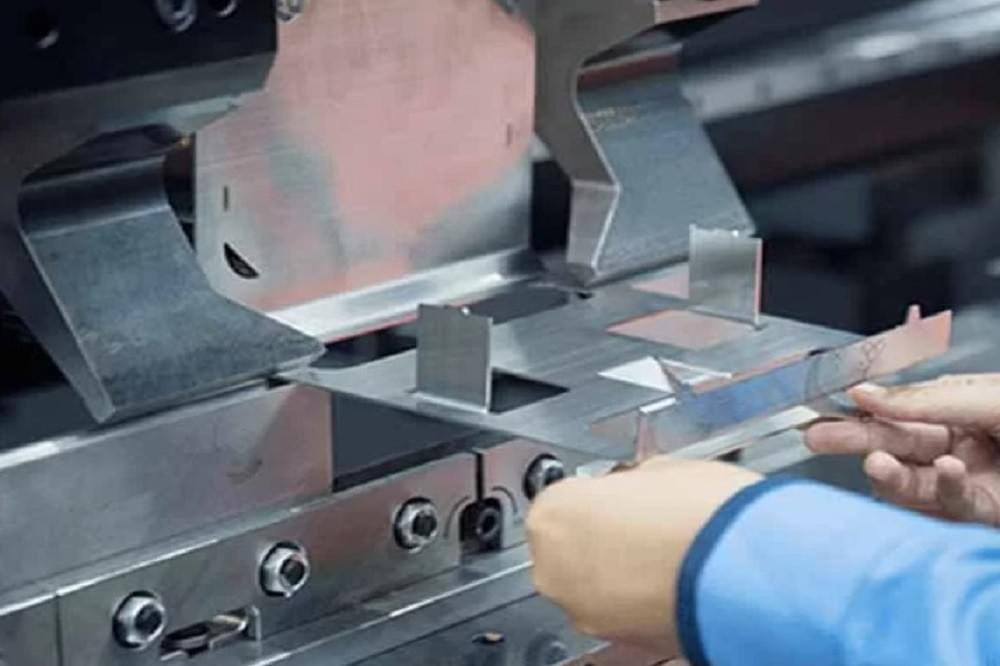
During sheet metal fabrication, thin metal sheets are molded into desired shapes by applying force, using the plasticity of metals to transform them. Metal sheets are manipulated to bring about the visions of craftsmen and manufacturers using equipment such as press brakes.
Plastic deformation is the key to sheet metal fabrication because it capitalizes on the malleability of metals. When force is applied to a sheet of metal, it undergoes gradual deformation. Initially, the metal exhibits elastic deformation, attempting to return to its original state once the force is removed. The metal becomes permanently plastic deformed after passing a critical point—the yield point—when it is no longer able to return to its original form. Sheet metal fabrication is based on this transformative process.
Sheet metal parts: applications
Among the many things that sheet metal parts are used in are industrial products, consumer goods, electronics components like computers and televisions, buildings, crafts, automobile bodies, and more. Industrial settings, factory production equipment, food manufacturing equipment, and others extensively use them. Sheet metal parts are versatile, enabling intricate designs and innovative concepts to be realized, whether they are brackets, covers, chassis components, or rails.
Mechanical, manual, and beyond: The Landscape of Sheet Metal Fabrication
Sheet metal fabrication encompasses a wide variety of techniques, each tailored to specific applications and needs. In industrial settings, sheet metal fabrication is primarily carried out by precision machinery and molds, whereas manual sheet metal fabrication is mainly used in traditional craftsmanship and automotive repair. A fusion of mechanical and manual processes is observed in the architectural domain, where custom-made metal components adorn buildings.
The journey of sheet metal fabrication
Approximately eight distinct stages are involved in sheet metal fabrication. Let's take a closer look at each stage:
Programming and unfolding
While designs are often crafted using 3D CAD, sheet metal fabrication requires transforming these designs into a flat state for single-sheet fabrication. In this process, designs are digitally “unfolded” and layouts are optimized to maximize material use, followed by the development of machining programs.
Cutting and Blanking
By using laser cutting machines or turret punch presses, this step involves cutting out internal and perimeter holes in metal sheets, called blanks. Using laser machines, outer perimeters and large holes can be cut at high speed, while drilling and shaping holes can be done with turret punch presses. As a way of combining the advantages of both methods, some facilities utilize hybrid “laser-punch press” machines.
The deburring process
After cutting processes, there is a need to remove residual burrs to achieve precise dimensions. Through deburring processes, either manually or automatically, these imperfections are eliminated, aligning the final product with the expectations of clients.
Bending
Metal sheets can be shaped with precision and finesse using a press brake, which facilitates the bending process. Whether crafting intricate angles or elegant curves, press brakes – sometimes referred to as bending machines or benders – are essential to achieving desired configurations, bringing designs to life with seamless accuracy.
Finishing
Sheet metal fabrication's finishing process involves removing thermal distortion caused by welding, grinding down raised areas created by filler welding, electrolytically removing weld burns, and polishing the surface.
The assembly
Multiple parts are assembled using fastening components such as bolts, nuts, or rivets. This method is often used in places where welding-level strength is not required or when disassembly is necessary later in the process. In addition to component assembly, medium-scale unit assembly, and final assembly of entire machines or devices are all forms of assembly. Some sheet metal fabrication companies use the term "assembly" (welding assembly) to describe the assembly process using welding.

Visual inspections of sheet metal products are often conducted before shipping to ensure dimensional accuracy and appearance. In dimensioning inspections, tools such as calipers, scales, and angle gauges are used to compare dimensions, hole positions, and accuracy between drawings and finished products. The factory may use image measuring machines or coordinate measuring machines for inspection, or they may visually check for scratches and burrs on the product.
Summary
Ultimately, sheet metal fabrication is a versatile technique that can be used to fabricate industrial components, factory infrastructure, and food processing equipment, among other things. Using this method, you can make a wide range of products, from machine-made pieces to handcrafted pieces to architectural installations. Metals such as steel, stainless steel, and aluminum are common choices for sheet metal processing at Meviy, which specializes in blanking and bending. Aside from aesthetics and functionality, surface treatments such as painting, plating, and anodizing enhance the functionality of sheet metal. A key component of modern manufacturing, sheet metal processing offers a wide range of applications and flexible methodologies.